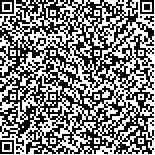Archive > Volume 40 Issue 6 > 2014,40(6):706-714. DOI:10.7519/j.issn.1000-0526.2014.06.007 Prev Next
Comparative Analysis of Two Severe Rainfall Events with Different Dry Moist Characteristics on Satellite Water Vapor Imagery
- Article
- Figures
- Metrics
- Preview PDF
- Reference
- Related
- Cited by
- Materials
Abstract:
Two severe rainfall processes happened in the south of the lower reaches of the Yangtze River and South China in July 2010 and June 2011, respectively, which were caused by the Meiyu front and monsoon trough separately. Conventional observation data, NCAR/NCEP reanalysis data and satellite water vapor imageries are used to analyze the two severe rainfall events. The results show that the two cases have something in common, but also some differences. The water vapor imagery shows that both of the two cases have the water vapor band. The rainstorm cloud clusters all occur in the water vapor bands no matter how the water vapor patterns change. A high θse tongue (θse ≥350 K) at 850 hPa maintains within and in parallel to the direction of the water vapor band during the two heavy rainfall periods. In the former case, the dark area on the north border of the water vapor band is corresponding to an updraft belt at 700 hPa, a divergence area and a negative vorticity area at 200 hPa. The strong convective clouds are nearly coincided with the center of the upward motion at low level and the convergence center in high level. However, in the latter case, there are no such evident characteristics. The analysis on potential vorticity (PV) indicates that the dark areas are corresponding to high band of PV in the upper troposphere while the water vapor band is corresponding to low band of PV in the later case. As to the former case, the correspondence of high band of PV and dark areas is not as evident as in the later case. The similarities and differences of dry and moist characteristics on the satellite water vapor images are closely related to the different large scale ambients.
Keywords:
Project Supported:
Clc Number:


Mobile website









